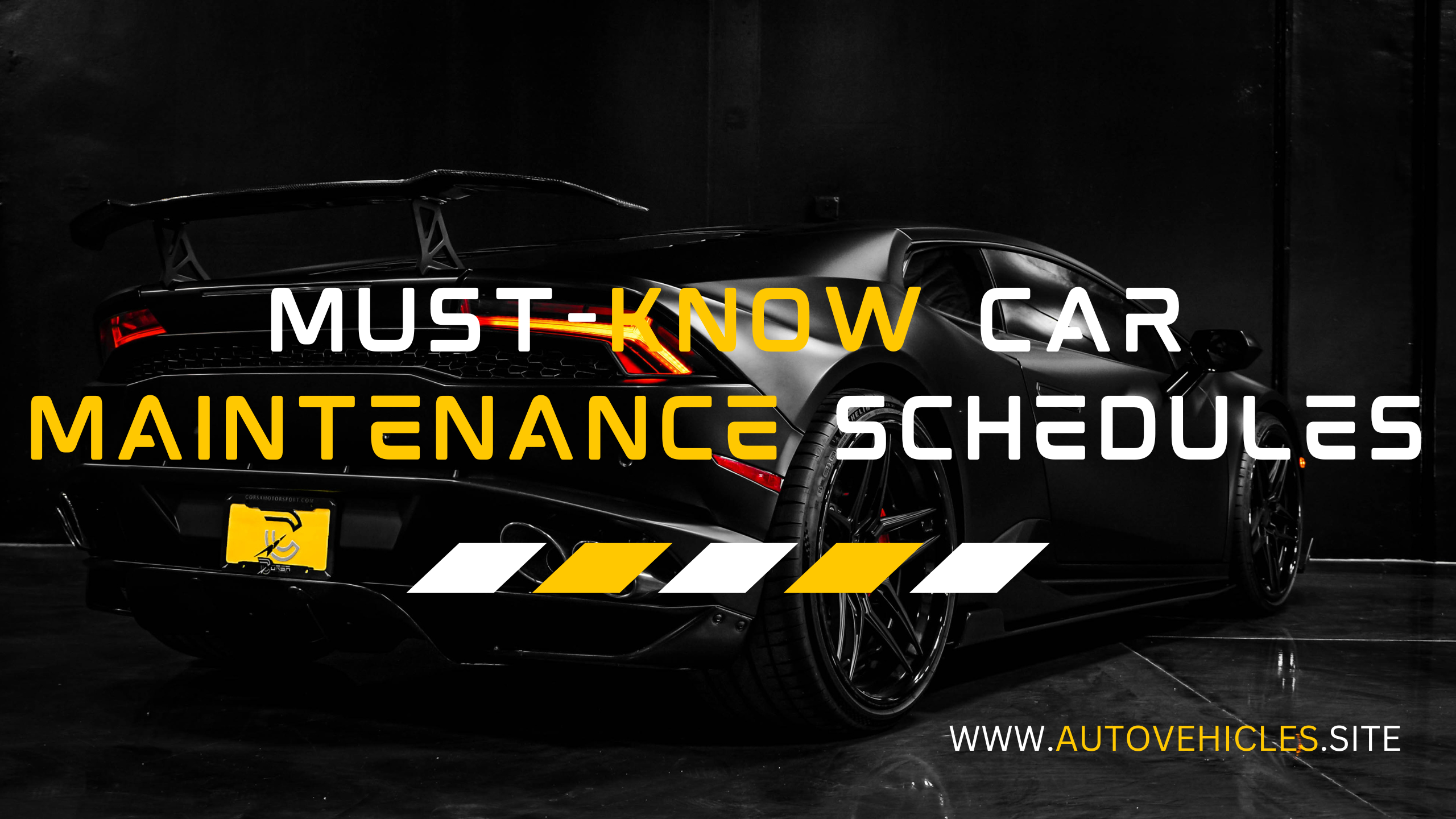
It is crucial to follow a car maintenance schedule to ensure that your vehicle serves you well for many years without developing major issues.
By strictly following the manufacturer guidelines and recommendations, one can avoid costly repairs or even total system failure.
Here is a complete list of the car maintenance schedules that you need to adhere to.
Introduction to Car Maintenance Schedules
Car maintenance is important, but many car owners fail to observe service intervals that are essential for the car’s health.
Preventive maintenance helps to guard against costly breakdowns, maximise fuel efficiency and power, prolong the durability of expensive parts, and ensure safety and high residual value.
The schedules offered by the Manufacturer take into consideration model-specific issues regarding part durability and road use.
This way, it can be guaranteed that every system receives the required attention at every stage of development. Third-party schedules provide generic timelines which may not be specific to any given model.
This guide includes both to ensure that you are making proactive maintenance decisions in these areas.
Manufacturer Recommended Car Maintenance Schedules
Your owner’s manual contains information on specific maintenance needs for your particular make and model of vehicle.
These car maintenance schedules take into consideration duty cycles, operating conditions and life expectancy of components such as fluids and filters, spark plugs, drive belts and hoses among others.
When they are tightly regulated, failure is averted before it is too soon while at the same time, function is maximised.
They include oil changes, inspection of the vehicle’s interior and exterior, replacement of fluids, changes of the belts and hoses, rotation of tires, and checking on wear items. If one is able to miss just one critical service interval, the deterioration tends to be hastened.
Ensure you read through your manual carefully before initiating any changes and try to link the services with mileage or time whichever is first.
Standard Maintenance Schedules and Services
It is common to find most vehicles to run on certain general maintenance schedules disregarding the brand or model of the specific car.
Here are standard schedules with key service checkpoints
Regular Oil and Filter Change
Among all the car services, the primary one is to change the oil and the oil filter. Clean oil reduces friction to ensure that the engine does not overheat and does not wear out easily.
The traditional oil change frequency was every 3,000 miles while most cars on the road today need an oil change every 5,000 to 10,000 miles.
You should refer to your owner’s manual to determine the correct service interval of your car’s engine.
Oil change shops will also inform you based on your driving style, and they will also have a sticker that indicates the next date or the next mileage for the service.
The engine protection is done through routine oil and filter changes to ensure that the car will operate smoothly for the higher mileage.
Annual Services (15-30k miles)
- Full check of all parts
- Brake, power steering, coolant and transmission fluid replenishments
- Rotation of tires, alignment of wheels, and testing of the battery.
Major Services (30k, 60k, 90k Miles)
- Spark plug replacement
- Coolant flush
- Transmission fluid change
- Some models require timing belt replacement
Brakes
- The visual brake inspection should be done every 10,000 miles.
- Brake pad replacement every thirty thousand to seventy thousand miles
Tires
Tire rotation is a process of moving the tires to other wheels with an aim of distributing the wear and tear evenly.
This is because the front and rear tires have different wear rates and rotation allows them to have their anticipated lifespan.
The rotation should be made after every 5000 to 8000 miles. Certain cars need their tires to be rotated more often or less often than others do.
If properly installed, tires wear out with effectiveness when used for more than 50,000 miles with rotation. It helps avoid situations where the treads on the tires wear unevenly or very quickly.
When rotating, the technician will also check the tire pressure and the state of the tread and will inform the client of any signs of wear detected.
Air Filter Replacement
Periodically changing the air filter helps the engine by avoiding the intrusion of dust. .. .
And the detailed guide would continue covering key maintenance areas like:And the detailed guide would continue covering key maintenance areas like:
- Brake inspections
- Transmission fluid changes
- Battery testing
- Wheel alignments
- Scheduled component replacements
Here are some general service schedules for your reference but always check your manual for the specifics or the recommended service interval of their services.
Keep a record of each maintenance visit you make; the number of miles on the car and the services you provided. This car maintenance log will ensure that there is hard work and determination while at the same time increasing the resale value of the car.






0 Comments